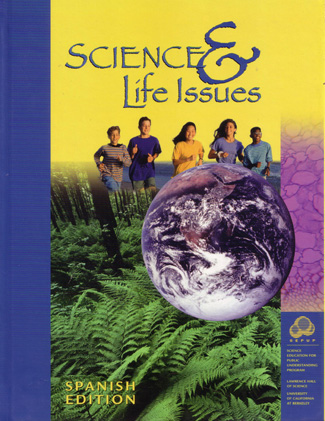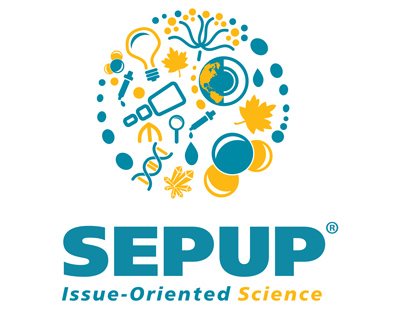Science and Life Issues (SALI)

Science and Life Issues (SALI) is a standards-based, issues-oriented science course that emphasizes the life/health sciences. The course can serve as a stand-alone, full-year program or as part of a three-year integrated science with Issues and Physical Science, the SEPUP physical science course, and Issues and Earth Science, SEPUP’s Earth Science course.
SALI has four process-oriented components:
* Scientific thinking
* Personal and societal decision-making
* Science and technology as professions
* Science as a predictive activity
The Science and Life Issues complete course contains 32 student books, a Teacher’s Guide and the complete materials package.
Sample Activity
Summary:
Science and Life Issues (SALI) is a standards-based, issues-oriented science course that emphasizes the life/health sciences. The course can serve as a stand-alone, full-year program or as part of a three-year integrated science with Issues and Physical Science, the SEPUP physical science course, and Issues and Earth Science, SEPUP’s Earth Science course.
SALI has four process-oriented components:
- Scientific thinking
- Personal and societal decision-making
- Science and technology as professions
- Science as a predictive activity
The Science and Life Issues complete course contains 32 student books, a Teacher’s Guide and the complete materials package.
Description of Units:
A. Studying People Scientifically
Student investigations address important ideas about the nature of science, the traditional scientific method and experimental design. At the end of the unit, they evaluate several proposed studies for the quality of their scientific design.
B. Body Works
Students investigate heart disease and the use of medication, nutrition and exercise. The unit focuses on the role of organ systems in providing nutrients and oxygen to the body and transporting and eliminating wastes (maintaining internal balance).
C. Micro-Life
Students study microbiology; cell size, structure, function and permeability; and systems of classification. They explore the function of the immune system and the growth of antibiotic-resistant organisms. A project on disease develops research skills.
D. Our Genes, Our Selves
Students explore fundamental principles of Mendelian genetics in pea plants and humans. They study asexual and sexual reproduction, the process of cell division, and the role of nature and nurture in determining traits. Near the end, students model the use of DNA technologies to solve real problems.
E. Ecology
Students consider what happens when a new species is introduced into an ecosystem as they model ecological relationships within an ecosystem; simulate the effect of competition, predation and other factors on population size; and investigate local ecosystems.
F. Evolution
Students consider whether an extinct species should be brought back to life as they examine fossils, consider the lines of evidence for evolution, natural selection, and the role of genetic mutations. Students evaluate the impact of humans on the extinction/evolution of species.
G. Using Tools and Ideas
Students consider what happens when a new species is introduced into an ecosystem as they model ecological relationships within an ecosystem; simulate the effect of competition, predation and other factors on population size; and investigate local ecosystems.

